-
 Bitcoin
Bitcoin $105,515.7682
-0.75% -
 Ethereum
Ethereum $2,550.8526
-3.88% -
 Tether USDt
Tether USDt $1.0004
0.02% -
 XRP
XRP $2.1386
-2.78% -
 BNB
BNB $653.0175
-0.31% -
 Solana
Solana $146.9461
-4.05% -
 USDC
USDC $0.9998
0.02% -
 Dogecoin
Dogecoin $0.1782
-2.00% -
 TRON
TRON $0.2708
-0.25% -
 Cardano
Cardano $0.6369
-3.90% -
 Hyperliquid
Hyperliquid $41.2211
0.21% -
 Sui
Sui $3.0463
-5.78% -
 Bitcoin Cash
Bitcoin Cash $438.0762
2.18% -
 Chainlink
Chainlink $13.2264
-5.73% -
 UNUS SED LEO
UNUS SED LEO $8.9649
0.98% -
 Stellar
Stellar $0.2593
-3.86% -
 Avalanche
Avalanche $19.1916
-5.96% -
 Toncoin
Toncoin $3.0052
-3.20% -
 Shiba Inu
Shiba Inu $0.0...01203
-1.86% -
 Hedera
Hedera $0.1572
-4.58% -
 Litecoin
Litecoin $85.5869
-1.34% -
 Polkadot
Polkadot $3.8083
-3.62% -
 Ethena USDe
Ethena USDe $1.0003
-0.02% -
 Monero
Monero $307.3843
-3.36% -
 Dai
Dai $0.9998
-0.02% -
 Bitget Token
Bitget Token $4.5079
-2.03% -
 Uniswap
Uniswap $7.4836
-2.67% -
 Pepe
Pepe $0.0...01116
-3.77% -
 Aave
Aave $282.2684
-3.42% -
 Pi
Pi $0.5680
-7.78%
Must you clear the position when the moving average crosses? This special trend can wait!
A moving average cross can signal trend changes, but relying on it alone may lead to false signals, especially in volatile crypto markets.
Jun 12, 2025 at 06:28 am

Understanding Moving Average Crosses
A moving average cross occurs when a short-term moving average intersects with a longer-term moving average. Traders often interpret this as a signal for potential trend reversals or continuations. The most commonly used combinations include the 50-day and 200-day moving averages, also known as the "Golden Cross" (bullish) or "Death Cross" (bearish). However, it's crucial to understand that these signals are not infallible and should be interpreted within the broader context of market conditions.
Moving averages smooth out price data over time, helping traders filter noise and identify trends more clearly. But crossing points can sometimes result in false signals, especially during sideways or volatile markets.
Why Some Traders Clear Positions Immediately
Many traders follow a strict rule: once a moving average cross occurs, they close their positions immediately to avoid potential losses from a reversal. This is particularly common among algorithmic traders and those using automated systems where speed and precision are critical.
- Risk management: Closing positions after a cross helps limit exposure if the trend indeed reverses.
- Discipline: Sticking to predefined rules ensures consistency in trading behavior.
- Avoiding emotional decisions: Automated exits prevent hesitation or second-guessing during fast-moving markets.
However, this approach may not always be optimal, especially in strong trending markets where a cross might only represent a temporary pullback.
When You Can Wait After a Moving Average Cross
There are scenarios where holding your position after a moving average cross makes sense. If the broader trend remains intact and other indicators confirm strength, a trader may choose to wait before exiting.
For instance:
- Volume analysis: A surge in volume accompanying a cross could indicate continued interest rather than a reversal.
- Support/resistance levels: If the price is near a key support zone, a cross might just be testing that level.
- Multiple time frame analysis: Higher time frames like weekly charts may still show bullish momentum even if lower time frames suggest a correction.
In such cases, patience can be rewarded by riding the trend longer than expected without prematurely closing a profitable trade.
How to Evaluate Whether to Hold or Exit
The decision to clear a position or hold after a moving average cross requires careful evaluation of several factors. Here’s how you can do it step-by-step:
- Confirm with additional indicators: Use RSI, MACD, or Bollinger Bands to verify whether the cross aligns with other signs of reversal or continuation.
- Assess candlestick patterns: Look for bullish or bearish formations around the cross area to gauge market sentiment.
- Check for divergence: Price making new highs while the indicator doesn’t can signal weakness even before a cross occurs.
- Evaluate macroeconomic events: News, regulatory changes, or global developments can impact the validity of technical signals.
By combining multiple tools, traders can reduce the risk of acting on false signals and make more informed decisions.
Case Study: Bitcoin's 2021 Bull Run and Moving Average Behavior
During Bitcoin’s significant bull run in early 2021, there were instances where the 50-day moving average crossed below the 200-day line briefly — a classic Death Cross — yet the price continued upward shortly afterward.
This shows that a moving average cross isn't always a reliable standalone signal. In this case:
- Bitcoin broke through $60,000 despite a temporary bearish cross due to strong fundamentals and investor sentiment.
- Traders who exited based solely on the cross missed further gains, while those who waited benefited from the continued uptrend.
This example illustrates why rigid reliance on moving average crosses can be limiting in dynamic crypto markets.
Frequently Asked Questions
Q: What is a Golden Cross in cryptocurrency trading?
A: A Golden Cross occurs when a short-term moving average (like the 50-day) crosses above a long-term moving average (like the 200-day), signaling a potential bullish trend.
Q: How reliable are moving average crosses in highly volatile crypto markets?
A: They can be less reliable in highly volatile environments due to frequent false signals. It's best to use them alongside other confirmation tools.
Q: Should I use simple or exponential moving averages for crossover strategies?
A: Exponential moving averages (EMA) react faster to recent price changes and are preferred by many traders for timely signals, but both have their place depending on strategy.
Q: Can moving average crosses work on intraday charts like 1-hour or 4-hour timeframes?
A: Yes, they can, but they tend to generate more frequent and potentially misleading signals compared to daily or weekly charts.
Disclaimer:info@kdj.com
The information provided is not trading advice. kdj.com does not assume any responsibility for any investments made based on the information provided in this article. Cryptocurrencies are highly volatile and it is highly recommended that you invest with caution after thorough research!
If you believe that the content used on this website infringes your copyright, please contact us immediately (info@kdj.com) and we will delete it promptly.
- XRP Price Shows Signs of a Bullish Recovery, With Analysts Watching Levels for an Upside Breakout
- 2025-06-14 04:50:12
- XRP Price Shows Signs of a Bullish Recovery, as Analysts Watch Levels for an Upside Breakout
- 2025-06-14 04:50:12
- Leading Cryptocurrencies Dipped Despite Lower-Than-Expected Inflation and the New Trade Deal Announcement with China.
- 2025-06-14 04:45:12
- XRP Price Prediction: Can the Token Reach $73 This Cycle?
- 2025-06-14 04:40:12
- Bitcoin Hashrate Reaches All-Time High, Exceeding 943 EH/s
- 2025-06-14 04:40:12
- Bitcoin Hits Local ATH but Analysts Warn: Time to Sell and Watch Key Support
- 2025-06-14 04:35:13
Related knowledge

Is it an opportunity for the long positive line with large volume to break through the platform and then shrink back?
Jun 14,2025 at 04:42am
Understanding the Long Positive Line with Large VolumeIn technical analysis, a long positive line refers to a candlestick pattern where the closing price is significantly higher than the opening price, often indicating strong buying pressure. When this occurs alongside large volume, it suggests that market participants are actively involved in pushing t...
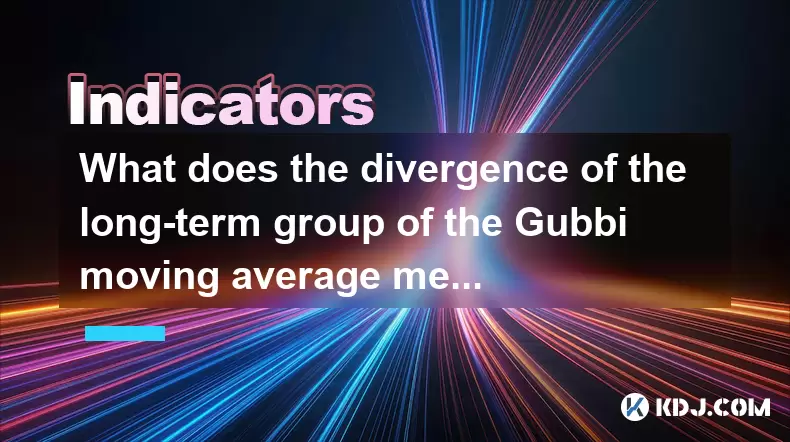
What does the divergence of the long-term group of the Gubbi moving average mean? How long can the trend last?
Jun 14,2025 at 02:56am
Understanding the Gubbi Moving AverageThe Gubbi moving average is a technical indicator used by traders in cryptocurrency markets to identify trends and potential reversals. Unlike traditional moving averages, the Gubbi variant incorporates unique calculations that emphasize price momentum and volatility adjustments. This makes it particularly useful fo...
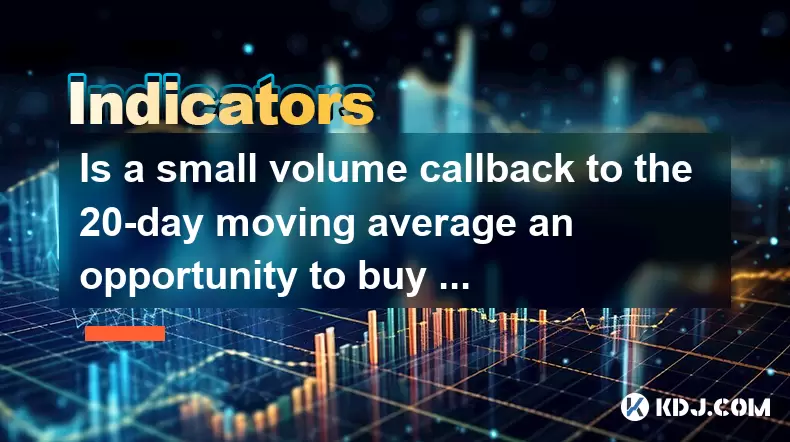
Is a small volume callback to the 20-day moving average an opportunity to buy low? What is the key to look at?
Jun 14,2025 at 02:28am
Understanding the 20-Day Moving Average in Cryptocurrency TradingIn cryptocurrency trading, the 20-day moving average (20DMA) is a commonly used technical indicator that helps traders assess the short-term trend of an asset. It calculates the average price of a cryptocurrency over the last 20 days and smooths out price volatility. When a coin experience...
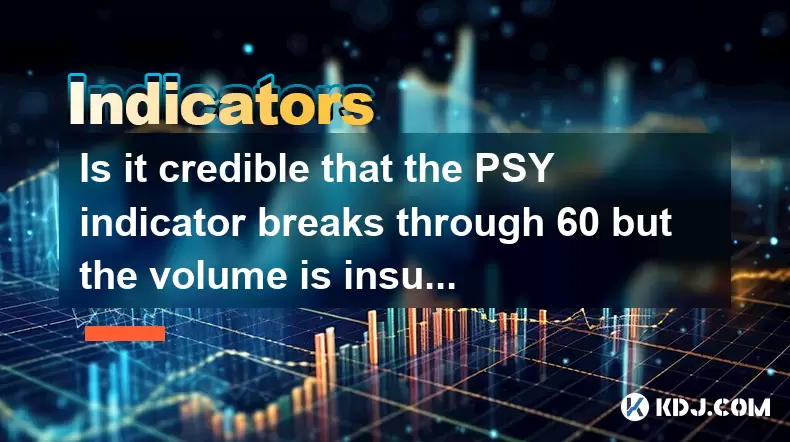
Is it credible that the PSY indicator breaks through 60 but the volume is insufficient?
Jun 14,2025 at 12:14am
Understanding the PSY Indicator in Cryptocurrency TradingThe Psychological Line (PSY) indicator is a momentum oscillator used primarily to measure the sentiment of traders and investors in financial markets, including the cryptocurrency space. It calculates the ratio of days where prices closed higher versus lower over a specified period, typically 12 o...
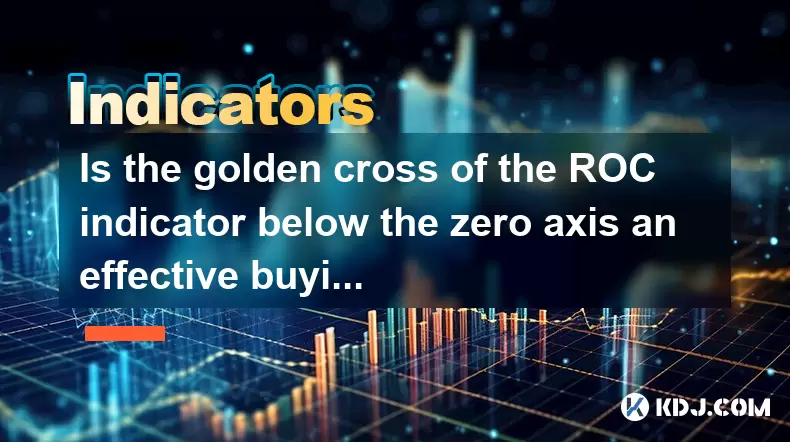
Is the golden cross of the ROC indicator below the zero axis an effective buying point?
Jun 14,2025 at 01:29am
Understanding the ROC Indicator and Its SignificanceThe Rate of Change (ROC) indicator is a momentum oscillator used in technical analysis to measure the percentage change in price between the current closing price and the closing price from a set number of periods ago. This tool helps traders assess the speed at which prices are changing, offering insi...
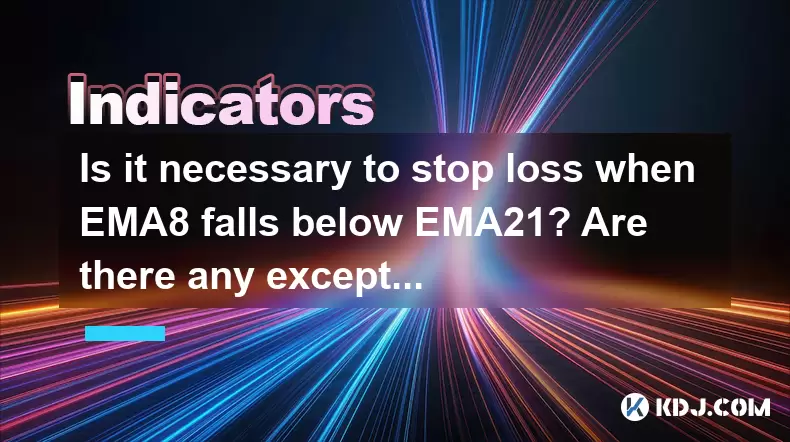
Is it necessary to stop loss when EMA8 falls below EMA21? Are there any exceptions?
Jun 14,2025 at 02:42am
Understanding EMA8 and EMA21 in Cryptocurrency TradingIn cryptocurrency trading, Exponential Moving Averages (EMAs) are widely used technical indicators to identify trends and potential reversal points. The EMA8 refers to the 8-period exponential moving average, while EMA21 is the 21-period EMA. These tools help traders make informed decisions by smooth...

Is it an opportunity for the long positive line with large volume to break through the platform and then shrink back?
Jun 14,2025 at 04:42am
Understanding the Long Positive Line with Large VolumeIn technical analysis, a long positive line refers to a candlestick pattern where the closing price is significantly higher than the opening price, often indicating strong buying pressure. When this occurs alongside large volume, it suggests that market participants are actively involved in pushing t...

What does the divergence of the long-term group of the Gubbi moving average mean? How long can the trend last?
Jun 14,2025 at 02:56am
Understanding the Gubbi Moving AverageThe Gubbi moving average is a technical indicator used by traders in cryptocurrency markets to identify trends and potential reversals. Unlike traditional moving averages, the Gubbi variant incorporates unique calculations that emphasize price momentum and volatility adjustments. This makes it particularly useful fo...

Is a small volume callback to the 20-day moving average an opportunity to buy low? What is the key to look at?
Jun 14,2025 at 02:28am
Understanding the 20-Day Moving Average in Cryptocurrency TradingIn cryptocurrency trading, the 20-day moving average (20DMA) is a commonly used technical indicator that helps traders assess the short-term trend of an asset. It calculates the average price of a cryptocurrency over the last 20 days and smooths out price volatility. When a coin experience...

Is it credible that the PSY indicator breaks through 60 but the volume is insufficient?
Jun 14,2025 at 12:14am
Understanding the PSY Indicator in Cryptocurrency TradingThe Psychological Line (PSY) indicator is a momentum oscillator used primarily to measure the sentiment of traders and investors in financial markets, including the cryptocurrency space. It calculates the ratio of days where prices closed higher versus lower over a specified period, typically 12 o...

Is the golden cross of the ROC indicator below the zero axis an effective buying point?
Jun 14,2025 at 01:29am
Understanding the ROC Indicator and Its SignificanceThe Rate of Change (ROC) indicator is a momentum oscillator used in technical analysis to measure the percentage change in price between the current closing price and the closing price from a set number of periods ago. This tool helps traders assess the speed at which prices are changing, offering insi...

Is it necessary to stop loss when EMA8 falls below EMA21? Are there any exceptions?
Jun 14,2025 at 02:42am
Understanding EMA8 and EMA21 in Cryptocurrency TradingIn cryptocurrency trading, Exponential Moving Averages (EMAs) are widely used technical indicators to identify trends and potential reversal points. The EMA8 refers to the 8-period exponential moving average, while EMA21 is the 21-period EMA. These tools help traders make informed decisions by smooth...
See all articles

























































































